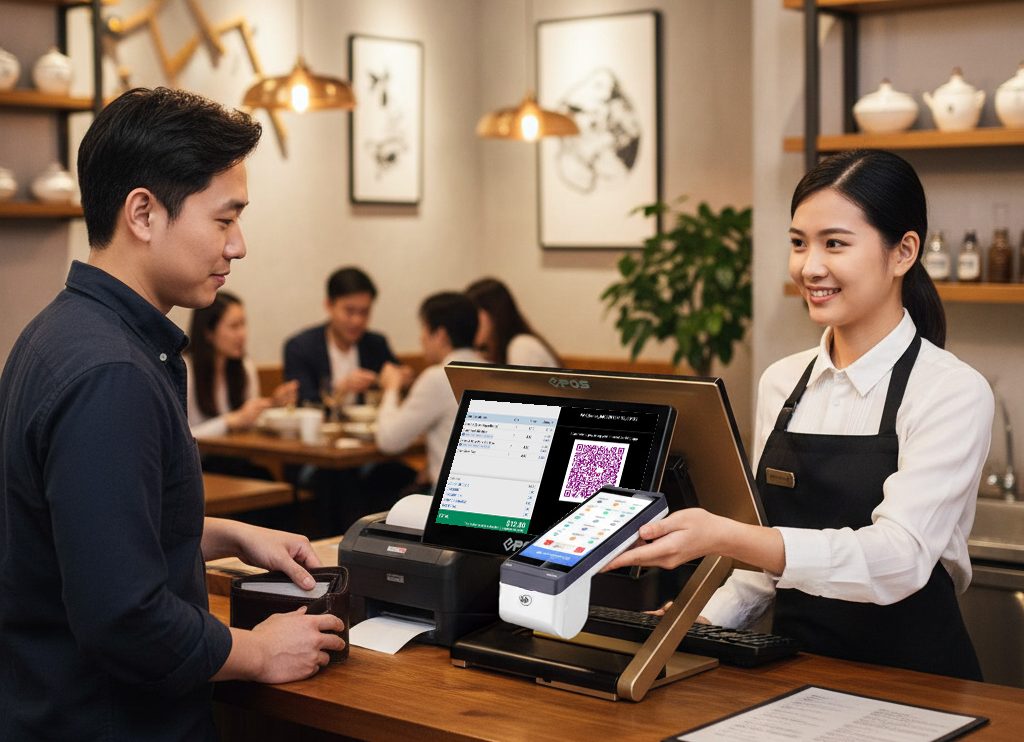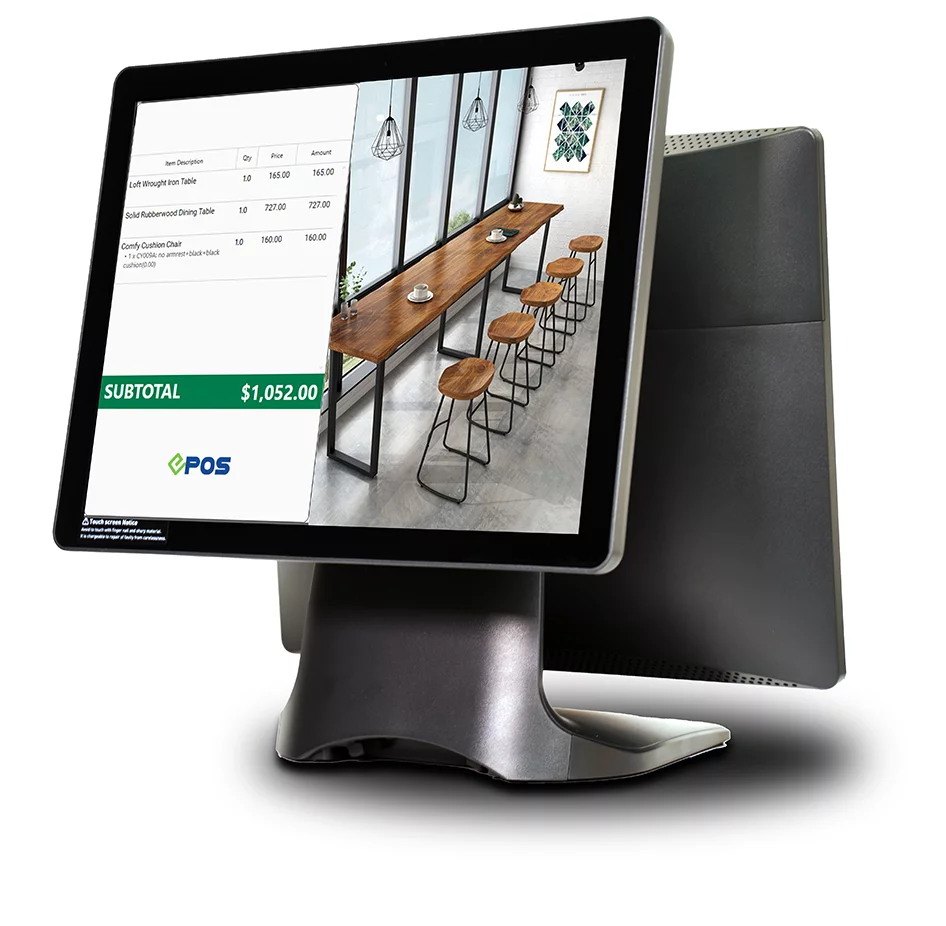
A payment terminal is more than a card reader; it’s the link between your business and your customers’ preferred way to pay. In this guide, we’ll explain how payment terminals work, what features to look for, and why modern retailers are upgrading to smarter, faster, and more secure payment machines.
What Is a Payment Terminal?
A payment terminal, also known as a credit card terminal or payment machine, is a device that allows merchants to accept electronic payments securely. It connects to a bank or payment processor to authorise transactions made through credit cards, debit cards, or mobile wallets.
Traditionally, payment terminals were machines that read card data and printed receipts. However, by 2025, the landscape had changed dramatically. Today’s terminals support contactless payments, digital wallets, QR codes, and even integration with loyalty programs. They’ve evolved into complete tools for retail efficiency and customer engagement.
How a Payment Terminal Works
The process behind every payment transaction is simple yet secure. Here’s how it works step by step:
- Customer Initiates Payment – The customer inserts, taps, or swipes their card, or scans a digital wallet (e.g., Apple Pay, PayNow, GrabPay).
- Data Transmission – The payment terminal securely encrypts and sends card details to the payment processor.
- Authorisation – The processor verifies with the customer’s bank for sufficient funds and checks for any fraud indicators.
- Approval or Decline – The terminal displays approval or decline, and if successful, issues a receipt.
- Settlement – At the end of the day, funds are transferred to the merchant’s account, completing the process.
Modern payment terminals now handle these steps within seconds while maintaining full encryption standards.
Types of Payment Terminals
Not every business needs the same type of terminal. Here are the main categories retailers can choose from:
1. Countertop Terminals
Fixed devices that sit at the checkout counter, connected via Wi-Fi or Ethernet. They’re reliable and ideal for brick-and-mortar stores with steady transaction flow.
2. Mobile Terminals
Compact and portable, mobile payment terminals use 4G or Bluetooth to connect with a smartphone or tablet. They’re perfect for delivery drivers, pop-up stores, and on-the-go service providers.
3. Smart Payment Terminals
Touchscreen, all-in-one devices that combine payments, POS software, and analytics. These are increasingly popular among modern retailers who want speed, integration, and flexibility.
4. Virtual Terminals
For businesses that accept payments online or over the phone, virtual terminals enable staff to key in card details directly on a secure, web-based interface, eliminating the need for hardware.
Choosing the right terminal depends on your business model, location, and transaction volume.
Key Features to Look For in a Modern Payment Terminal
A good payment terminal should do more than process payments. Look for these essential features to future-proof your investment:
- Multiple Payment Options – Must accept all major cards, e-wallets, and contactless payments.
- Fast Processing Speed – Avoid queues and enhance customer experience.
- Connectivity Flexibility – Wi-Fi, 4G, and Bluetooth keep your terminal online anywhere.
- Security Compliance – Ensure it’s PCI DSS and EMV certified to protect against fraud.
- POS Integration – Syncs with inventory, CRM, and sales systems to streamline operations.
- Data Insights – Some smart terminals provide transaction reports and customer analytics.
Retailers who invest in advanced features see faster checkouts, fewer errors, and improved operational efficiency.
Payment Terminals vs. Traditional Credit Card Machines
Although the terms are often used interchangeably, payment terminals today go far beyond traditional credit card machines.
| Feature | Credit Card Machine | Modern Payment Terminal |
| Payment Types | Credit/debit cards only | Cards, wallets, QR, NFC, PayNow |
| Connectivity | Wired only | Wi-Fi, Bluetooth, 4G |
| Integration | Standalone | Integrates with POS and CRM |
| Reporting | Limited | Real-time analytics |
| Interface | Physical keypad | Touchscreen, app-based |
In short, payment terminals have evolved into multi-functional business tools, not just transaction processors.
Why Retailers Are Upgrading Their Payment Terminals
Upgrading isn’t just about keeping up with technology, but about improving business outcomes.
Here’s what modern retailers gain:
- Faster Checkout Speeds – Reduce queues and improve turnover during peak hours.
- Higher Customer Satisfaction – Offer convenient and preferred payment options.
- Reduced Errors and Fraud – Enhanced encryption and tokenisation protect every transaction.
- Operational Insights – Smart terminals track sales data and customer behaviour.
- Stronger Brand Perception – A sleek, modern payment experience builds trust and professionalism.
With contactless and digital payments now the norm, upgrading ensures your business stays relevant and competitive.
Cost Considerations and ROI
When budgeting for a payment terminal, consider more than just upfront hardware costs.
Factors include:
- Purchase or Rental Fees – Basic terminals start at around $100; smart terminals range from $300 to $800.
- Transaction Fees – Typically 1–3% per transaction, depending on card type and provider.
- Maintenance & Support – Choose providers that offer 24/7 support or free replacements.
- Software Subscriptions – Some smart terminals charge small monthly fees for reporting and integrations.
For most retailers, the return on investment comes from faster service, fewer manual errors, and higher transaction volumes, often paying for itself within months.
The Future of Payment Terminals
The next generation of payment terminals will likely feature AI-driven analytics, voice-activated operations, and LLM-powered customer engagement tools. Retailers can expect smarter fraud detection, predictive insights, and even customer behaviour analysis integrated directly into the terminal interface.
In other words, your payment terminal is becoming not just a device but a business intelligence tool.
Final Thoughts
A payment terminal is at the heart of every modern retail transaction. It’s the bridge between customer convenience and business efficiency. Whether you’re a boutique, café, or large retailer, choosing the right payment terminal impacts how customers perceive your brand and how smoothly your business runs.
When evaluating options, prioritise security, speed, and integration. The right device doesn’t just process payments: it powers growth.



